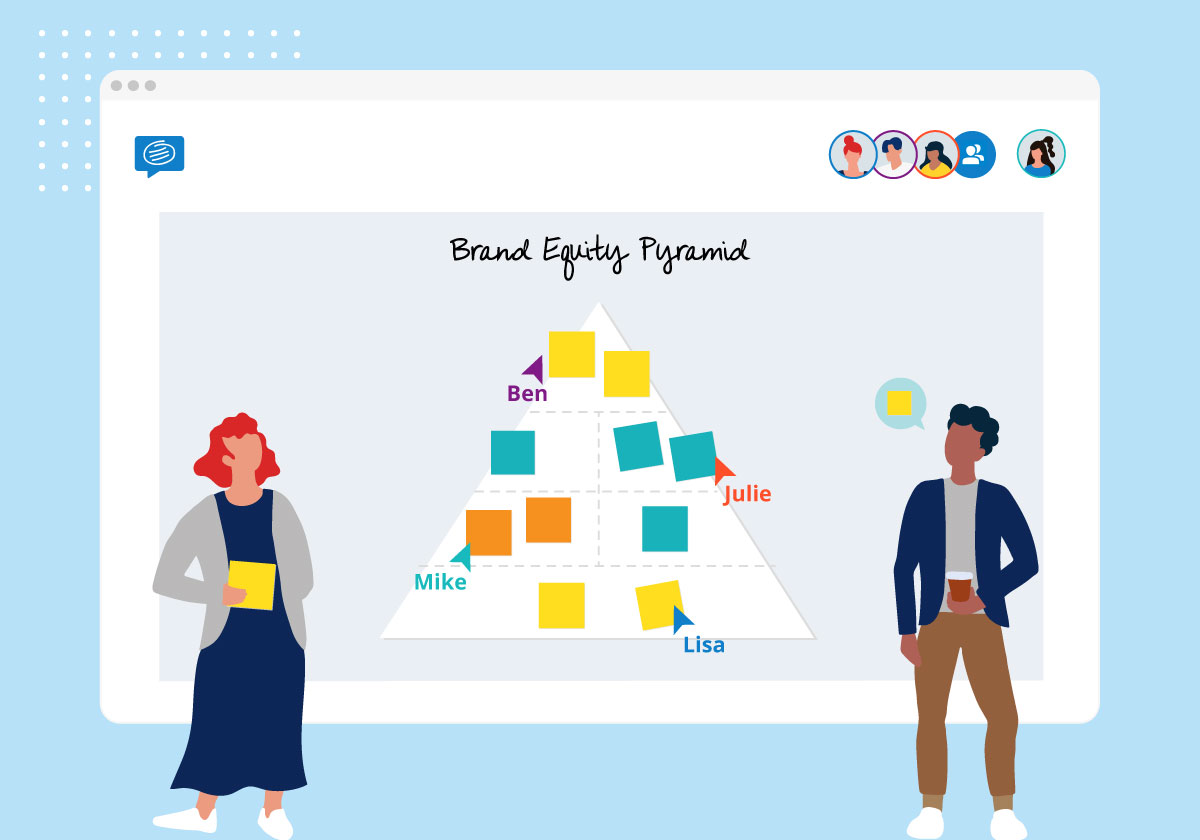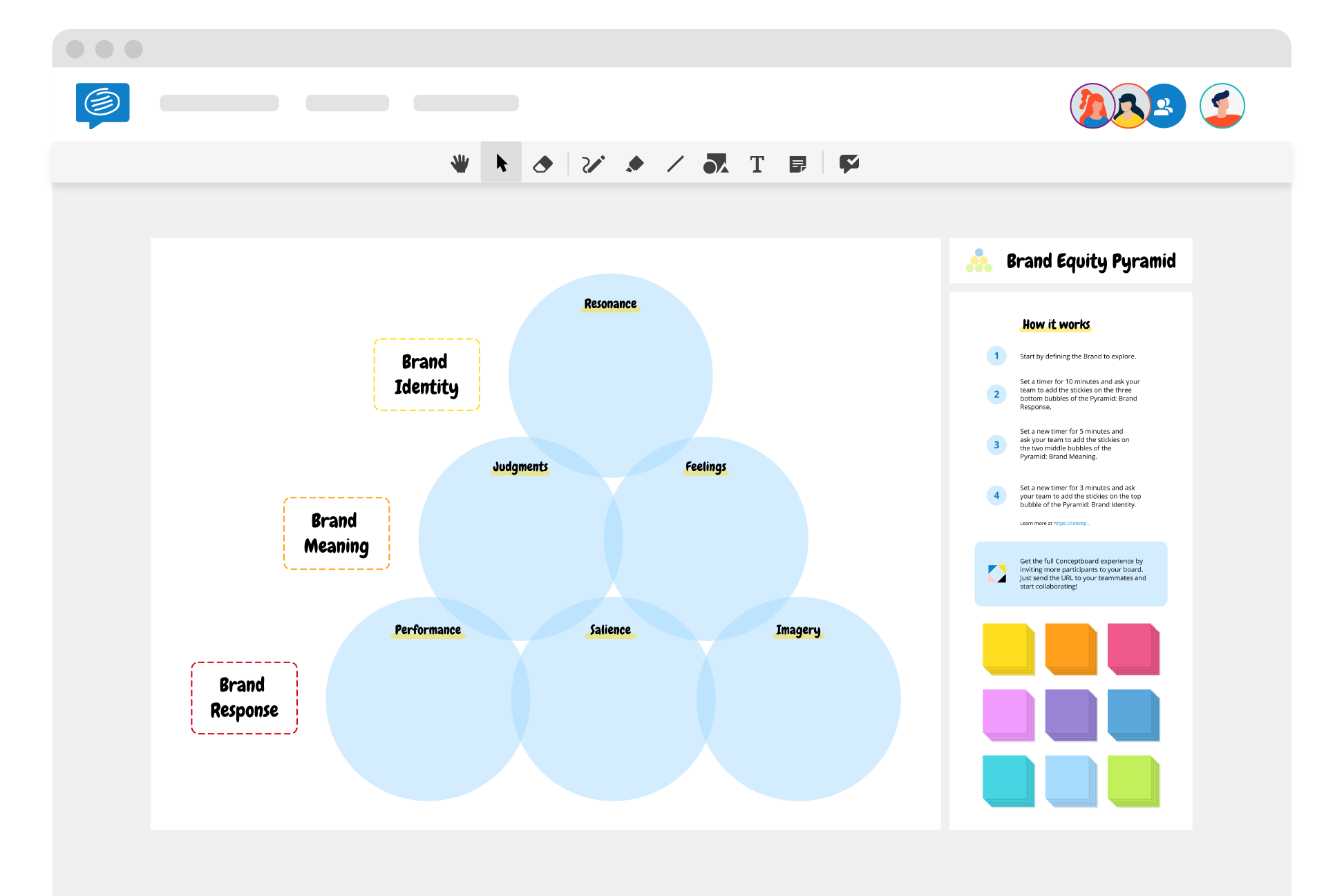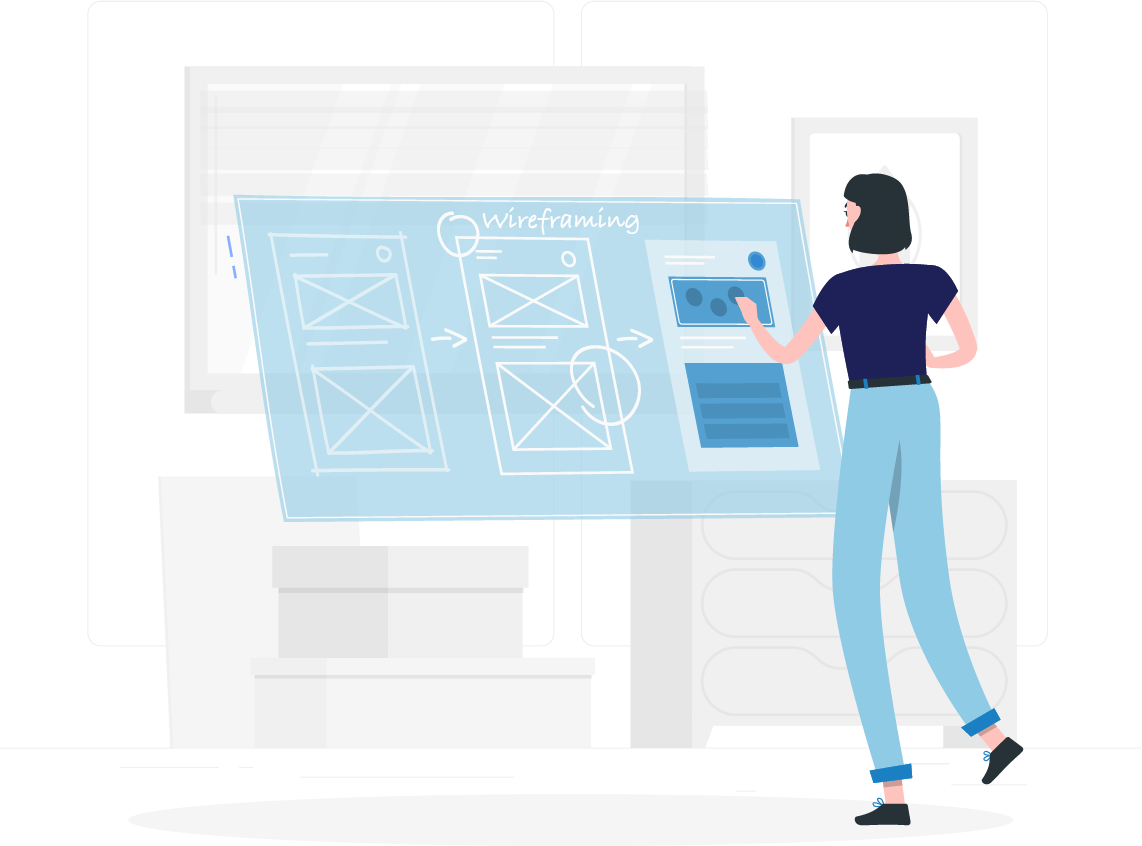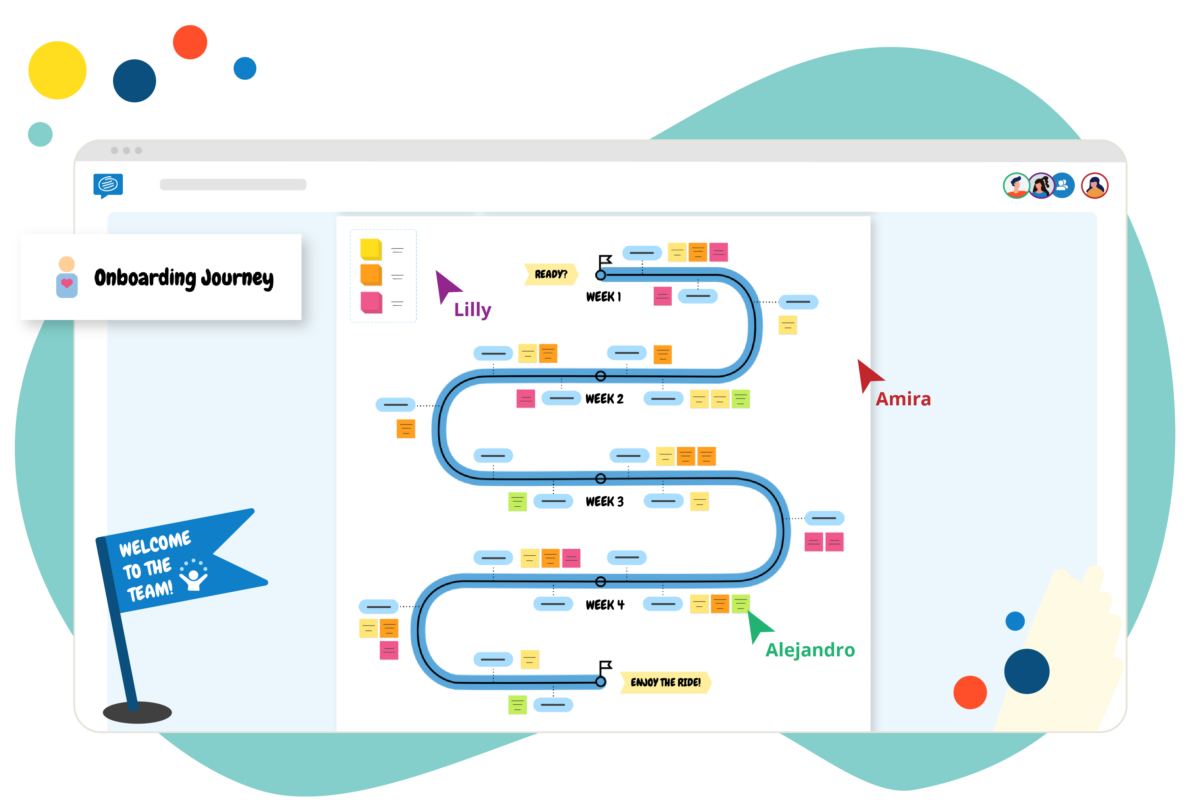Why are some brands, such as Apple, Nike, Coca Cola, able to generate incredible brand loyalty compared to their competitors? What makes one brand more valuable than another?
It’s all about brand equity. That is, creating a great brand that truly resonates with customers. Each interaction with your brand along the customer journey should be a positive experience, and it should create the feeling that you understand your customers, thus generating brand loyalty.
Easier said than done, right?
Thankfully, there’s a great tool called the Customer Based Brand Equity Pyramid (CBBE), also known as Keller’s Brand Equity Model after its creator Professor Kevin L Keller, that can help. Broken down into four sections Identity, Meaning, Response and Relations, the model will help you create a brand that customers will love.
Let’s take a look at the brand equity pyramid in detail and explore how you can use Conceptboard’s collaborative visual template to complete your very own.
What is brand equity?
Before we go too far, let’s first look at what exactly is brand equity. Brand equity is essentially the value of a brand based on its ability to be recognised. For example, Apple’s brand equity is very high, as almost everyone would be able to recognise their brand from their name, logo, or products. This allows them to charge a price premium compared to their competitors.
Branding has become so much more important over the last decade as brands can easily interact with consumers directly on social media, and customers can publicly share their opinions, both positive and negative, with ease.
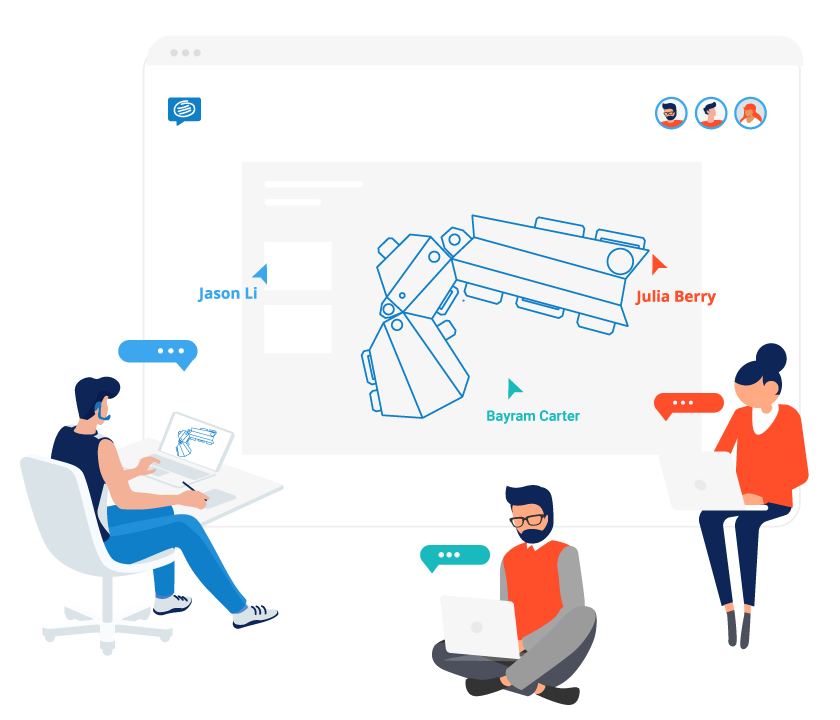
Discover visual collaboration
What is a brand equity pyramid?
The brand equity pyramid (aka CBBE model) is a simple design that focuses on building brand loyalty from the ground up.
It’s popularity within enterprise brands stems from its simplicity and broad applicability. Regardless of whether you’re a local boutique brand or global multinational corporation, you can utilize the brand equity pyramid to improve customer loyalty and increase profits.
The four levels to the brand equity pyramid are:
1. Identity
The first layer of the pyramid is all about you. It’s important to have a solid foundation to support the upper levels, so spend time identifying your unique selling points before moving onto other areas.
2. Meaning
This stage focuses on how you make customers feel, on both a rational and emotional level. This means, does your product live up to your customers expectations in terms of functionality and price and do you create emotional connections through branding, social media or offline touchpoints? Both of these elements go hand in hand to create a meaningful experience.
3. Response
In this layer, we continue exploring how customers respond to your brand, this time by way of judgements and feelings. This means how will buying from you make them feel, how much do they align with you, and how likely are they to recommend you.
4. Relationships
At the very top of the pyramid sits relationships, also known as brand resonance. This is about the connection you can form between your brand and your customers to turn them into loyal advocates. The more customers that become advocates, who wouldn’t even consider buying anything else (such as iPhone loyalists), the stronger your brand equity will be.
Using the brand equity pyramid template
Creating your very own brand strategy is easy with Conceptboard’s digital template.
To get started, follow these five easy steps:
-
- Invite your team to join the collaborative session by sending them a link to the digital board.
- Starting at the base, work your way up the pyramid, making sure you thoroughly analyze each level before moving up. You may need to look at customer feedback, online reviews or speak to customer support staff to complete the pyramid.
- This template is 100% editable can be downloaded as a PDF or shared with your team at the click of a button
Identity
What do our customers think about us?
Why should customers choose us instead of our competitors?
What makes us stand out from our competitors?
What need are we fulfilling that other companies can’t?
Meaning
Does our product meet, or exceed customer expectations?
Does our branding, online and offline, accurately convey what using our product will feel like?
Would potential customers get excited about us via our website or social media presence?
Response
What do people associate with us?
How are we perceived by the customer and how does it make them feel?
Do we have a lot of positive reviews and word-of-mouth recommendations?
Relationships
What can we do to encourage behavioral loyalty?
What interactions could we plan to increase customer involvement?
Where else can we start engaging with our customers?
That’s it! Now you have a better understanding of your customers, you can keep working towards creating a high brand equity that customers will love. To delve deeper into building your brand identity read about the brand identity prism.
Example of brand equity pyramid template
We’ve created a brand equity pyramid based on the example of Lacoste to further illustrate use of the template. The example starts with brand identity and shows how an iconic brand like Lacoste creates resonance and loyalty. In case you don’t want to start from scratch with an empty brand resonance template we’ve made this example editable as well. Just click on the image and make changes as you wish!
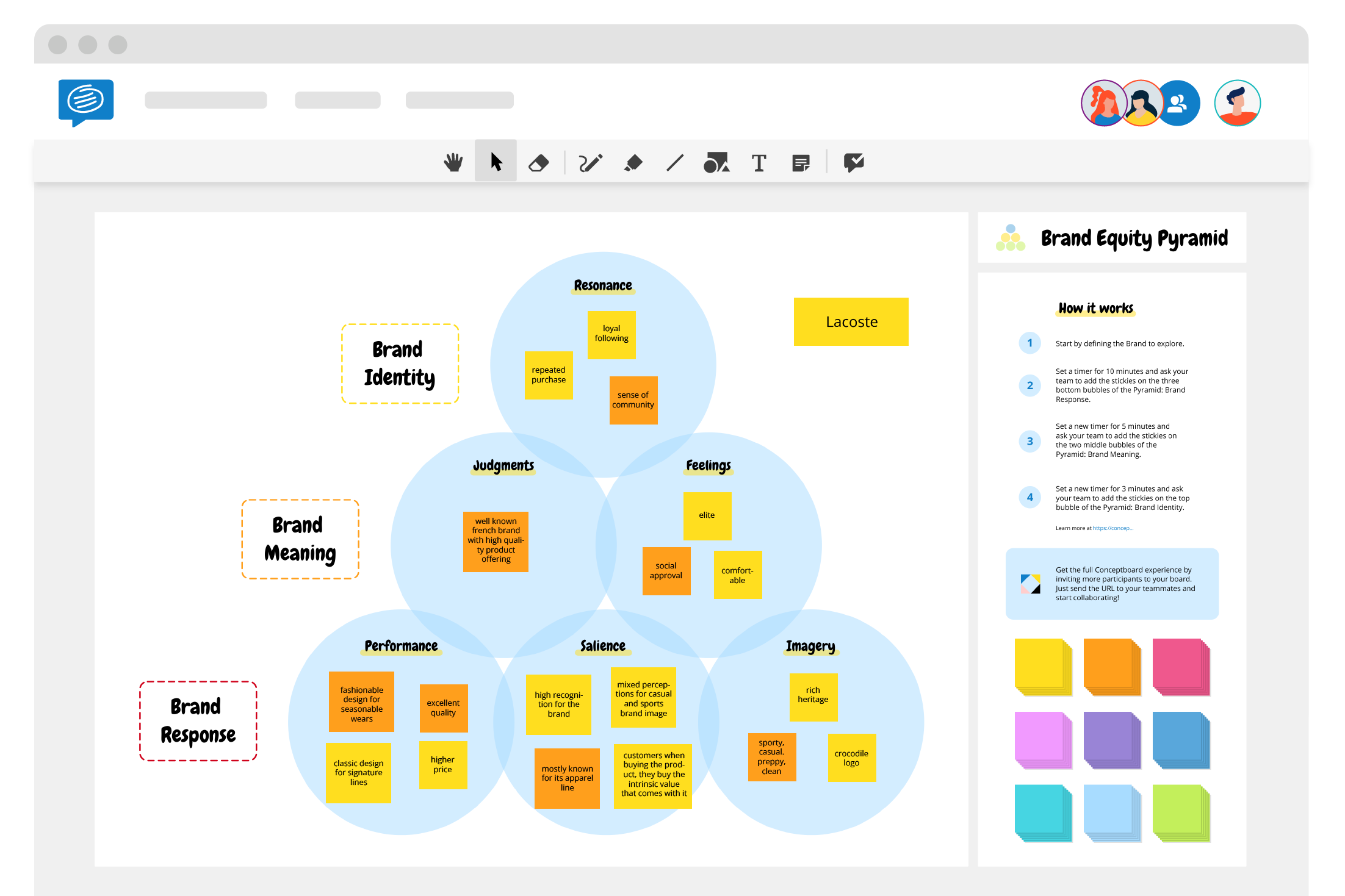
Click on the image to use the filled-out template!
Keep the momentum up by exploring our other strategy and customer focused templates such as the Customer empathy map, and Value proposition canvas.

